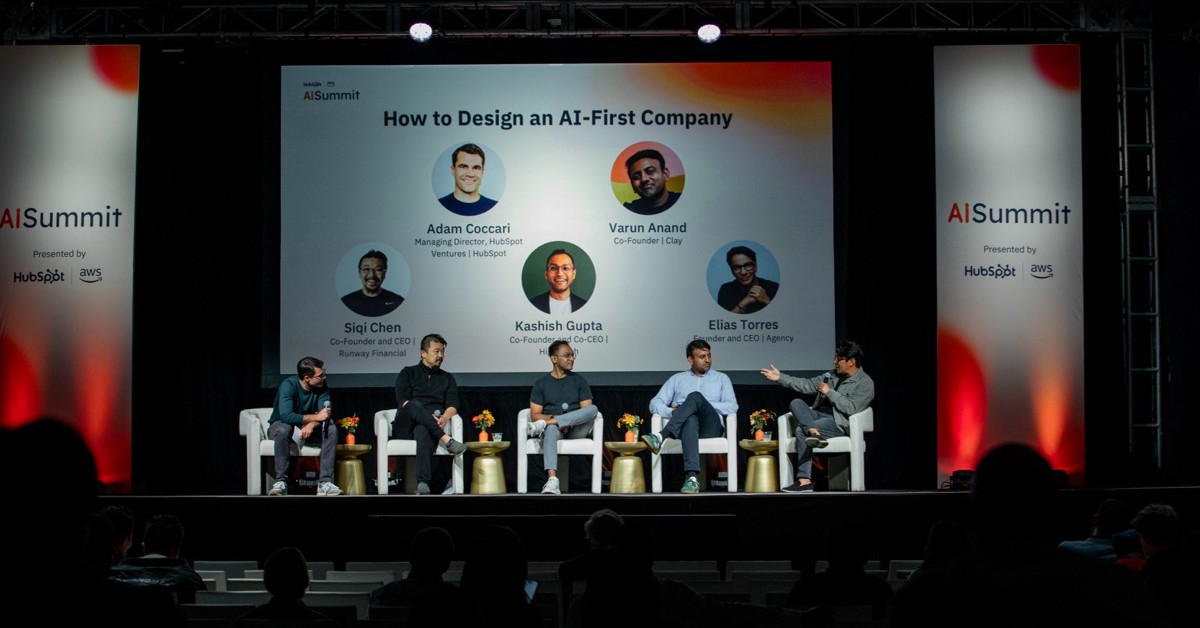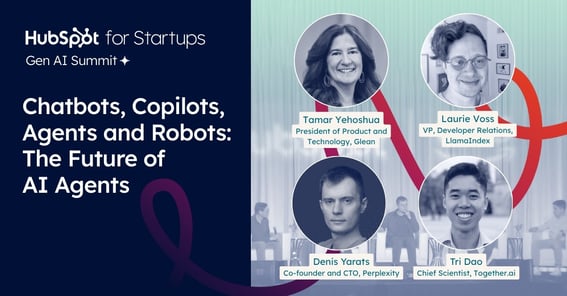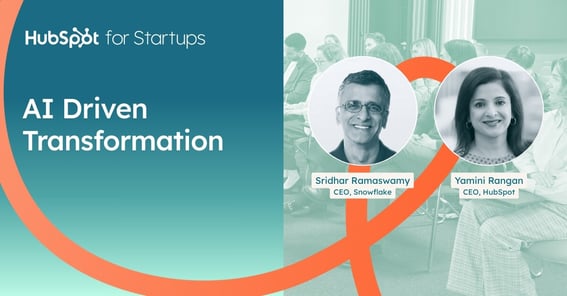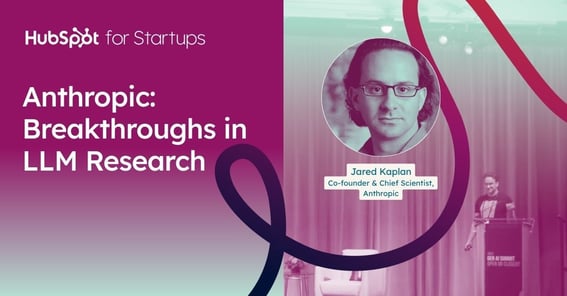Our Top 10 Takeaways from AiSummit 2025
Discover our top 10 key insights from AiSummit 2025, including how AI agents are becoming co-workers, outcome-based pricing, and organizational transformation.

Discover our top 10 key insights from AiSummit 2025, including how AI agents are becoming co-workers, outcome-based pricing, and organizational transformation.

We built AiSummit 2025 to bring together a few hundred of the sharpest minds in AI—founders, investors, enterprise leaders, and builders—for a full day of honest, unfiltered conversation. No mainstage bluster, no massive expo floor. Just signal.
If you were there, you know the vibe: people taking real swings, shipping live agents, and openly sharing what’s working (and what isn’t). We left with full notebooks and even fuller minds.
Here are our 10 takeaways that rose above the rest:
HubSpot’s Nicholas Holland described how customer-facing agents aren’t just automating small tasks—they’re becoming measurable team members. One internal agent booked 11,000 meetings in a single quarter. Another is resolving support tickets fast enough to be compared against human reps in dashboards.
“I want to see how all my reps are performing—human, human, human, customer agent.” – Nicholas Holland, HubSpot
For builders: Build for accountability, not novelty. If your agent’s delivering outcomes, treat it like part of the team.
Once agents are in production, you can’t just leave them alone. You need people to coach them, troubleshoot issues, and continuously optimize. Holland outlined two new roles: agent trainers and agent managers, both of which are becoming essential in scaling AI inside orgs.
For startups: If you’re building agent infra, this is a huge opportunity. If you're deploying agents, start thinking about the human layer that supports them.
The models are getting better by the week. But adoption? It’s slower. Several speakers pointed out that the real bottleneck now is organizational—not technical. Companies don’t yet have the workflows, training, or incentive structures in place to capitalize on AI’s potential.
For leaders: Shipping the model is only half the battle. Helping humans use it effectively is the other half.
Everyone wants to build agents that feel like magic. But the wins today are in the mundane: support tickets, lead enrichment, invoice processing. These are rule-based, repetitive, and easy to measure—perfect agent territory.
“If it’s repetitive and rule-based, it’s agentic territory.” – James Raybould, Turing
For founders: Don’t start with creative work. Start with workflows where outcomes are consistent, verifiable, and painful to scale with humans.
Yamini Rangan shared a powerful reframing: the shift from software-as-a-service to work-as-a-service. AI is moving beyond helping people do their jobs—it’s starting to do the job itself. That has implications for how we build, price, and measure success.
For product teams: If your platform doesn’t ship results, it’s just a feature. Customers want outcomes, not options.
Anthropic’s Matt Bell showed how agents can work together like real teams. One Claude instance acts as the orchestrator. Others specialize in sub-tasks like search, code generation, or summarization. This is less like having an assistant—and more like managing a project team.
“Multiple copies of Claude working in concert can be significantly more capable than a single instance.” – Matt Bell, Anthropic
For builders: Don’t just design for one all-knowing agent. Build agent teams—modular, specialized, and collaborative.
There’s a growing consensus: the best-performing AI won’t come from model tuning alone—it’ll come from data context. Structured, unstructured, behavioral, external—it all matters. HubSpot’s Claude integration via MCP lets GPT access ticket histories, CRM records, and business-specific data. That’s where the edge lives.
“AI systems aren’t limited by intelligence—they’re limited by context.” – Chris Child, Snowflake
For founders: Your data is your moat. Clean it, connect it, and feed it to your agents.
Several startups at the event—Clay, Hightouch, and Agency—are rethinking org design. Clay’s GTM team includes ex-founders who prototype features, close deals, and build internal tooling. Agency runs support and sales with three people and no dedicated function leads.
For operators: Don’t copy the org chart. Rethink it entirely. AI-first teams are flatter, faster, and built around outcomes—not departments.
Seat-based pricing makes less sense when agents—not humans—are doing the work. We heard about usage-based, ROI-based, and even per-result pricing models. LiveX AI shifted to outcome-based billing for churn prevention. Replit challenged everyone to stop charging per seat if agents are handling the workload.
“Your agent’s doing the job. Shouldn’t you pay for the job, not the seat?” – Amjad Masad, Replit
For SaaS teams: Align pricing with customer value, not user count.
Amjad Masad summed up what a lot of us were thinking:
“Your only moat is staying a year ahead, every year.”
With models, infra, and tooling widely accessible, the winners will be the ones who learn, ship, and adapt faster than everyone else.
For everyone: Speed isn’t just a competitive edge—it’s your survival strategy.
AiSummit 2025 wasn’t about speculation. It was about what’s working—right now—for founders and teams on the front lines. From the way we build to the way we price, sell, and structure our teams, AI is reshaping the foundation of how modern companies operate.
If you’re building something in this space: keep going. The future’s already here. It just hasn’t shipped to everyone yet.
Did you attend the event? Share on social and let us know what your favorite takeaways were.
Would you like full access to the complete AI Summit video library, featuring over ten hours of educational content and insights? Click below. The 2025 sessions will be added soon—that will be an additional six hours of AI video goodness!

Discover insights from AI leaders at Glean, Perplexity, LlamaIndex, and Together.ai on defining AI agents, building frameworks, and what's next for agent technology.

Discover how HubSpot and Snowflake CEOs are implementing AI strategies, evolving business models, and creating differentiated value in the era of generative AI.

Anthropic's Jared Kaplan explains the exponential growth of AI capabilities, Constitutional AI's advantages, and how Claude is transforming business workflows.
